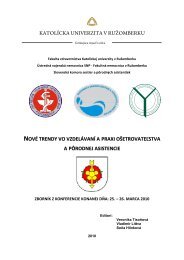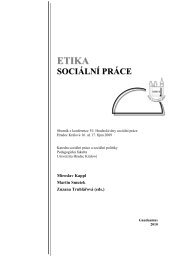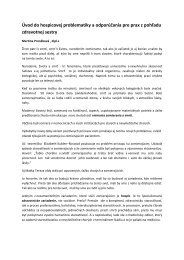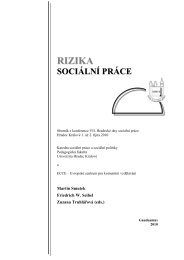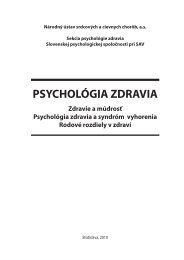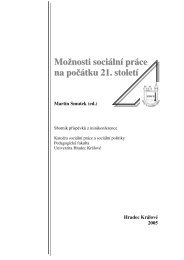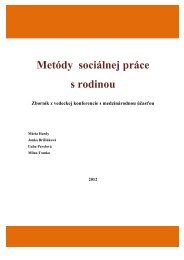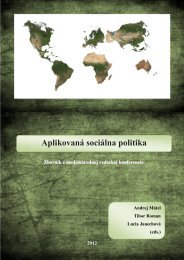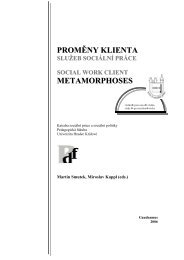Zmena klÃmy â možný dopad (nielen) na obyvateľstvo - Prohuman
Zmena klÃmy â možný dopad (nielen) na obyvateľstvo - Prohuman
Zmena klÃmy â možný dopad (nielen) na obyvateľstvo - Prohuman
Create successful ePaper yourself
Turn your PDF publications into a flip-book with our unique Google optimized e-Paper software.
down, coercive sex and drug use can also increase, thereby enhancing HIV infection<br />
risks, Butler observed. Severe heat, storms and floods stemming from<br />
climate change can also destroy homes and livelihoods, harming people economically.<br />
Whether a cause or consequence of the disease, fi<strong>na</strong>ncial woes can then<br />
exacerbate HIV. The poor are less likely to use prophylactics to protect themselves<br />
from the disease and less able to afford the medications to keep infections in<br />
check. Poverty is a very important magnifier of risk of AIDS.<br />
Weakening defences against other diseases<br />
Other diseases that spread in relation to climate change can further harm HIV<br />
patients. Because the virus chips away at the body‘s defences, opportunistic infections<br />
can strike when a person‘s immunological guard is down. Diseases that<br />
a healthy person may shrug off can be fatal to people with a compromised immune<br />
system, while deadlier illnesses like cholera and malaria are more likely<br />
to afflict them. The recent and tragic experience with HIV/AIDS, particularly in<br />
sub-Saharan Africa and South Asia, has shown how the activity of the otherwise<br />
mostly dormant tuberculosis bacterium is much increased when the body‘s immune<br />
surveillance is crippled by the human immunodeficiency virus. Researchers<br />
are now concerned about these variables intersecting in regions facing war, famine,<br />
and refugees stemming from climate change and leading to food shortages.<br />
Patterns have already emerged in some countries. We found a link between food<br />
insecurity and opportunistic infections in Uganda, especially among vulnerable<br />
children population (e.g. street children, children who have not been breast-feeded).<br />
In addition, people facing losses stemming from climate change are more<br />
likely to despair and resort to intravenous drug use, increasing HIV transmission.<br />
However, cautioned that the link between food security and disease susceptibility<br />
isn‘t always a sure thing, whether for HIV or for related opportunistic infections.<br />
Indeed, undernourished people may be a less attractive milieu for many pathogens.<br />
After all, their objective is not to kill the weak and starving. Rather, they are<br />
seeking, first, an ample source of nutrients and energy for replication and, second,<br />
a host fit enough to pass on the next generation of pathogens to another human<br />
host. Different manifestations of climate change can also have differing influence<br />
on the virus. Desertification in central Africa could hasten the disease‘s spread,<br />
while increased rainfall in East Asia may slow it down, for example.<br />
The best case would be the world stops thinking that we can just adapt to climate<br />
change and starts thinking we have to prevent it, as well, The same strategies<br />
47





